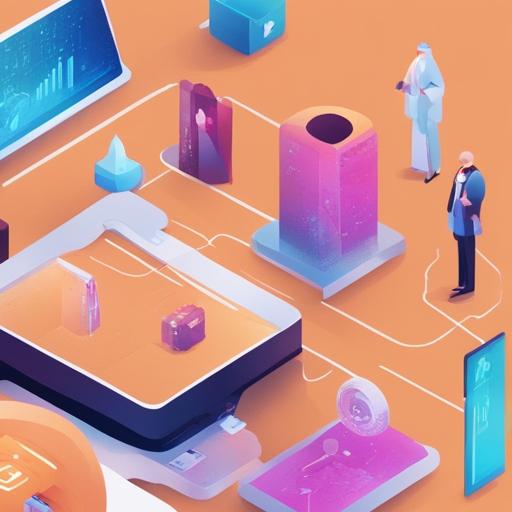Understanding NFTs
Non-fungible tokens, commonly known as NFTs, have taken the digital world by storm. From digital art to virtual real estate, they’ve revolutionized the way we perceive ownership in the digital realm. But what exactly are NFTs, and why are they gaining so much traction?
The Fundamentals of NFTs
At its core, an NFT is a type of digital asset that represents ownership or proof of authenticity of a unique item or piece of content. Unlike cryptocurrencies like Bitcoin or Ethereum, which are fungible and can be exchanged on a one-to-one basis, NFTs are unique and cannot be swapped like-for-like. This uniqueness is what gives NFTs their value.

Blockchain Technology
NFTs are typically built using blockchain technology, specifically on platforms like Ethereum. Blockchain, a decentralized ledger of all transactions across a network, ensures the transparency and security of NFTs. When an NFT is created, or minted, its details are recorded on the blockchain. This immutable record verifies the authenticity and ownership of the NFT, making it virtually impossible to forge or alter.
Applications of NFTs
The potential applications for NFTs are vast. While digital art and collectibles have garnered the most attention, NFTs can represent any digital asset, including music, virtual land, game items, and even tweets. Real-world applications are emerging as well, encompassing areas like real estate and intellectual property.
Digital Art
Digital artists are at the forefront of the NFT movement. By tokenizing their work, they can sell it directly to consumers without intermediaries. This not only provides a new revenue stream but also allows artists to earn royalties whenever their art is resold.
Gaming
In the gaming industry, NFTs enable players to truly own in-game items. These items can be traded or sold outside the game’s environment, adding a new layer of value and engagement for players.
Virtual Real Estate
Platforms like Decentraland allow users to buy, sell, and develop virtual land using NFTs. This concept is redefining how we think about property and ownership in the digital age.
The Controversies and Challenges
Despite their growing popularity, NFTs are not without controversy. Environmental concerns are paramount, as the process of minting NFTs consumes significant amounts of energy. Additionally, the speculative nature of the NFT market has led to comparisons with previous economic bubbles, causing some to worry about the long-term viability of NFTs.
The Future of NFTs
As technology evolves, so too will the applications and acceptance of NFTs. They have the potential to redefine ownership and provenance in the digital world, offering new opportunities for creators and consumers alike. However, their future will largely depend on advancements in technology, regulatory developments, and the ability to address current challenges.
NFTs represent a fascinating intersection of technology, creativity, and economy. While they are still in their nascent stages, their impact on the digital landscape is undeniable. Understanding the concept behind NFTs is the first step towards grasping their potential and the future they might shape.
